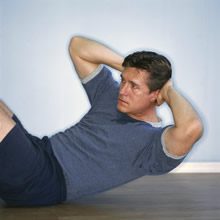Exercise Addiction: Can too much exercise be harmful?
September 23, 2014
The health benefits of physical activity and exercise keeps our bodies at a healthy weight and minimizes the risk of developing chronic diseases. Any amount of exercise is better than being sedentary, improving our chances of living longer and experiencing healthier lives. Though exercise is an enjoyable activity for many, it can be an addiction for others. Terms used to describe this addiction include compulsive exercise, excessive exercise, obligatory exercise, dependence exercise and over-exercise. Exercise addiction can cause serious physical, social and psychological harm and it can dramatically impact relationships with others.
The difference between positive addiction and negative addiction, as coined by William Glasser, is that an individual with a positive addiction is able to control their participation and improve what they are doing, which in turn betters their life. For example, a basketball player who takes 100 free throws every night to ameliorate their free throwing ability is likely to be a far superior free throw shooter when compared to somebody who does not practice. In comparison, negative addiction or compulsive exercising controls the individuals’ life. They have to do more in order to get the same feeling and may exercise to the point where it becomes detrimental to their health. Exercising while injured or sick, and disregarding the long-term risks of overdoing it, are among the negative impacts of this compulsive behavior. However, being dedicated to exercise does not necessarily mean you are an addict. Even though disciplined exercisers might get irritated from missing a workout, they do not suffer from the same symptoms that an addict would such as depression, anxiety, or insomnia.
Symptoms of exercise addiction:
- Exercising while injured, sick or against medical advice. Dedicated exercisers understand the importance of healing and resting.
- Exercising at the expense of work, family life and other relationships. Dedicated exercisers organize their training around their lives.
- Increasing the amount of exercise you do in order to achieve previous high or effect. Dedicated exercisers understand that gradual increments are best to allow the body to adapt adequately.
 Compulsive exercising can lead to major injuries, especially when minor injuries persist due to lack of rest. Improper recovery and inattention to minor injuries can cause long-term damage to ligaments, bones and tendons. Females may experience hormone imbalances, interference with menstrual cycles, and increased risk of osteoporosis.
Compulsive exercising can lead to major injuries, especially when minor injuries persist due to lack of rest. Improper recovery and inattention to minor injuries can cause long-term damage to ligaments, bones and tendons. Females may experience hormone imbalances, interference with menstrual cycles, and increased risk of osteoporosis.
If your exercise routine is having a negative impact on your life, limiting your ability to meet your other commitments or causing you to experience feelings such as anxiety, depression or withdrawal when not able to exercise, seek advice from a qualified psychologist. Sometimes too much of a good thing can lead to unintended negative consequences and as with most things in life, moderation is usually best.
References Available from the SIRC Collection:
1. Berczik K, Szab A, Demetrovics Z, et al. Exercise Addiction: Symptoms, Diagnosis, Epidemiology, and Etiology. Substance Use & Misuse. February 15, 2012;47(4):403-417.
2. Guszkowska M, Rudnicki P. MOOD CHANGES IN PHYSICALLY ACTIVE MEN IN SITUATIONS OF IMAGINED DISCONTINUATION OF PHYSICAL EXERCISES AS AN INDICATION OF THE RISK OF ADDICTION TO PHYSICAL EXERCISES: Mood in the situation of imagined discontinuation of exercise. Polish Journal Of Sport & Tourism. March 2012;19(1):16-20.
3. Krivoschekov S, Lushnikov O. Psychophysiology of sports addictions (exercise addiction). Human Physiology. July 2011;37(4):509-513.
4. Landolfi E. Exercise Addiction. Sports Medicine. February 2013;43(2):111-119.
5. Wallack R. Too Much of a Good Thing. Joe Weider’s Muscle & Fitness. April 2010;71(4):80-86.
6. Youngman J, Simpson D. Risk for Exercise Addiction: A Comparison of Triathletes Training for Sprint-, Olympic-, Half-Ironman-, and Ironman-Distance Triathlons. Journal Of Clinical Sport Psychology. March 2014;8(1):19-37.
The information presented in SIRC blogs and SIRCuit articles is accurate and reliable as of the date of publication. Developments that occur after the date of publication may impact the current accuracy of the information presented in a previously published blog or article.
